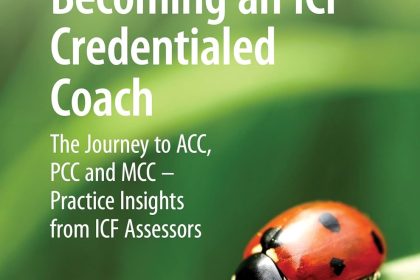S.K.I.R.T.S. in the Boardroom by Marshawn Evans, JD
When I read and began my review of this book, my thinking was that if I outline the learning points, then the reader of this review gains the value sought. What I found is that there is so much great information, with clear explanation about the use and application of each point; I believe the reader is best served by running out and getting this book!
Kindly humor me as I analyze the coaching process in comparison with the learning points in this book.
As coaches, we often find that the number one barrier to success is the individual themselves, essentially their confidence. CCC Coaches know that confidence is conveyed through attitude, and that by empowering clients to change their self-limiting beliefs, we empower clients to achieve. Then we look at what specifically a client wants to achieve, and their course of action to achieve it. We are their accountability partner. In planning to achieve goals, we look at skills, weaknesses, barriers, and specific action steps. Key skills are discussed in this book and apply to both coaches and clients: communication, listening, understanding, and networking. Coaches provide the perspective for applying these skills. Coaches partner in creative thinking with a focus on possibilities, tapping the talents, abilities, gifts, and skills of the client. Coaches open the door for clients to be themselves and develop their emotional intelligence. Coaches are leaders empowering leadership through clarity of vision.
It is fascinating how closely so much of the wisdom available today parallels and validates the work of coaches. Imagine the unlimited opportunities we create through visualizing, so that our clients are naturally experiencing expanding possibilities!
“Many are called but few are chosen. The difference between the called and the chosen is that the chosen choose to answer.”
Success begins within, from the four internal investments: self-esteem, attitude, direction, and dedication.
1. Self-esteem – Confidence: Can you succeed if you do not believe in yourself? Do others perceive you as confident?
2. Attitude – there simply is no substitute. Your attitude is perceived by others and is your foundation for building results.
3. Course or Purpose: A sense of purpose takes us beyond mediocrity, and empowers us to persevere. Purpose: The goal is to find it, use it, and rely upon it.
4. Commitment: Authentic commitment is being committed to something greater than yourself.
Anne Frank: “Then, without realizing it, you try to improve yourself at the start of each new day; of course, you achieve quite a lot in the course of time. Anyone can do this; it costs nothing and it certainly is very helpful. Whoever doesn’t know it must learn it and find by experience that a quiet conscience makes one strong.”
Communication: Success in business is about selling good ideas. Superior speaking skills are a must, so PDF = Preparation, Delivery, Flexibility.
* Preparation
o Audience: Know their MIND – Motivations, Interests, Needs, and Desires.
o Objectives: What is the purpose of the communication?
o Message: Tailor the message to their MIND.
* Delivery
o Verbal Dynamics: Word Choice
o Vocal Dynamics: Sound
o Visual Dynamics: Demeanor
* Flexibility: Adapt your style to fit situations.
Gender Differences in Communication: Understanding common tendencies empowers you to communicate effectively.
* Results versus Relationships: Balance relationship-building with a focus on tasks or results.
* Particulars versus People: Use logic rather than emotion to process information.
* Competition versus Cooperation: Conflict can be good because it generates discussion; have an opinion.
* Initiation versus Interaction: Starting the conversation shows leadership.
* Signals, Signals, Signals: Nonverbal communication (body language, facial expressions, and gestures) is more important than verbal.
Connections: More than who you know, it is how well you know them and how you are viewed. Networking is a give and take, give
being first. Your network is people from different times in your life.
AAA: Networking Posture
* Approachable: Develop open body language, make eye contact, and smile.
* Assertive: Expressing who you are and what it is you want with respect creates opportunities.
* Astute: Knowing your stuff is different from being a smart aleck. Are you prepared to respond effectively with information about what you do?
TAGS: Define and use what you have to offer.
* o Talents: Take the time to identify and focus your talents.
* o Abilities: Build on your strengths, address your weaknesses, and move to action.
* o Gifts: Given and earned, pull them together and direct their application.
* o Skills: List them, build them, connect them, and apply them.
EQ – Emotional Intelligence: the ability to manage your emotions and those of others.
* Understand individual triggering mechanisms.
* Separate the message from the messenger.
* Choose your words carefully.
* Apply the 5-minute rule.
LEADership = Listen, Educate, Act, Discern
* Listen: Really listen and learn.
* Educate: Keep learning and sharing information.
* Act: Take the steps.
* Discern: Weigh the options and decide.
Clarity: Establish your vision with clarity and you achieve your dreams. Vision Casting: see possibilities, explore them, dream, talk, then live the vision. Create Clarity with Six-Step “Dreaming with Deadlines” Plan
* Step One: Create a Vision: One sentence, based on your goals, for focus and direction.
* Step Two: Set Purpose Driven Goals: How, what, and when you act toward your goals.
* Step Three: Determine Necessary Resources: People, Places, Education, Training, Mentors, and Information.
* Step Four: Assign TASKs: Today, Activity, Serious, Kinetic
* Step Five: Set a Timeline: Deadlines with rewards and penalties.
* Step Six: Follow-up Assessment: Reassess because goals and priorities change.



